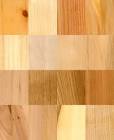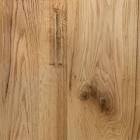## **Introduction**
CNC routing has revolutionized woodworking, enabling manufacturers to achieve intricate designs, repeatable accuracy, and high production efficiency. Whether you’re crafting furniture, cabinetry, or decorative elements, CNC routing for wood offers unmatched precision—but only when executed correctly.
As a CNC machining expert with a decade of experience, I’ve seen how proper techniques and machine settings can make or break a project. In this article, I’ll share practical insights on optimizing CNC wood routing, overcoming common challenges, and leveraging industry trends to stay ahead.
—
## **Why CNC Routing is Ideal for Woodworking**
CNC routers excel in woodworking due to their ability to:
– **Cut complex shapes** with high precision.
– **Automate repetitive tasks**, reducing labor costs.
– **Work with various wood types**, from softwoods to hardwoods and engineered materials like MDF and plywood.
– **Produce smooth finishes** with minimal post-processing.
However, achieving these benefits requires understanding the nuances of wood as a material and how CNC routers interact with it.
—
## **Key Challenges in CNC Routing Wood (And How to Solve Them)**
### **1. Tear-Out and Chipping**
Wood, especially softer varieties, is prone to tear-out when the router bit exits the material.
**Solutions:**
– **Use a down-cut bit** to compress fibers instead of lifting them.
– **Optimize feed rate and spindle speed**—too slow can burn the wood, too fast can cause chipping.
– **Apply masking tape** on the cutting surface to reduce splintering.
### **2. Tool Wear and Breakage**
Wood contains abrasive resins and fibers that dull cutting tools over time.
**Solutions:**
– **Choose carbide-tipped bits** for longer lifespan.
– **Regularly inspect and replace worn tools** to maintain cut quality.
– **Use lubricated bits** when working with resinous woods like pine.
### **3. Warping and Material Movement**
Wood expands and contracts with humidity, leading to inaccuracies during machining.
**Solutions:**
– **Allow wood to acclimate** in the workshop before cutting.
– **Use vacuum clamping** to secure warped boards.
– **Opt for engineered wood** (e.g., MDF, plywood) for more stability.
### **4. Dust Management**
Wood dust can clog machinery, reduce visibility, and pose health risks.

**Solutions:**
– **Install a high-quality dust collection system.**
– **Use compressed air** to clear debris during cuts.
– **Wear protective gear** (respirators, goggles) for operator safety.

—
## **Best Practices for CNC Routing Wood**
### **1. Select the Right Router Bits**
– **Straight bits** for clean cuts and dadoes.
– **Ball-nose bits** for 3D carving.
– **Compression bits** for clean edges on both sides of plywood.
### **2. Optimize Feed Rate and Spindle Speed**
– **Hardwoods (e.g., oak, maple):** Lower feed rate, higher RPM.
– **Softwoods (e.g., pine, cedar):** Higher feed rate, moderate RPM.
– **Test cuts** are essential to fine-tune settings.
### **3. Secure the Workpiece Properly**
– **Clamps, vacuum tables, or double-sided tape** prevent shifting.
– **Avoid excessive clamping pressure**, which can deform thin wood.
### **4. Use Proper Toolpaths**
– **Climb milling** for smoother finishes.
– **Conventional milling** for reducing tear-out in brittle woods.
—
## **Industry Trends in CNC Wood Routing**
### **1. Automation and Smart Manufacturing**
CNC routers are increasingly integrated with IoT and AI for predictive maintenance and real-time adjustments.
### **2. Sustainable Woodworking**
More manufacturers are using reclaimed wood and optimizing cuts to minimize waste.
### **3. Hybrid Machines**
Combining CNC routing with laser engraving or 3D printing for multi-functional production.
—
## **Conclusion**
CNC routing for wood offers incredible precision and efficiency, but success depends on understanding material behavior, tool selection, and machining strategies. By implementing these best practices and staying updated on industry trends, manufacturers can maximize productivity and produce flawless wood components.
Have questions about optimizing your CNC wood routing process? Feel free to reach out—I’m always happy to share insights from the shop floor!
